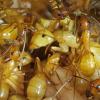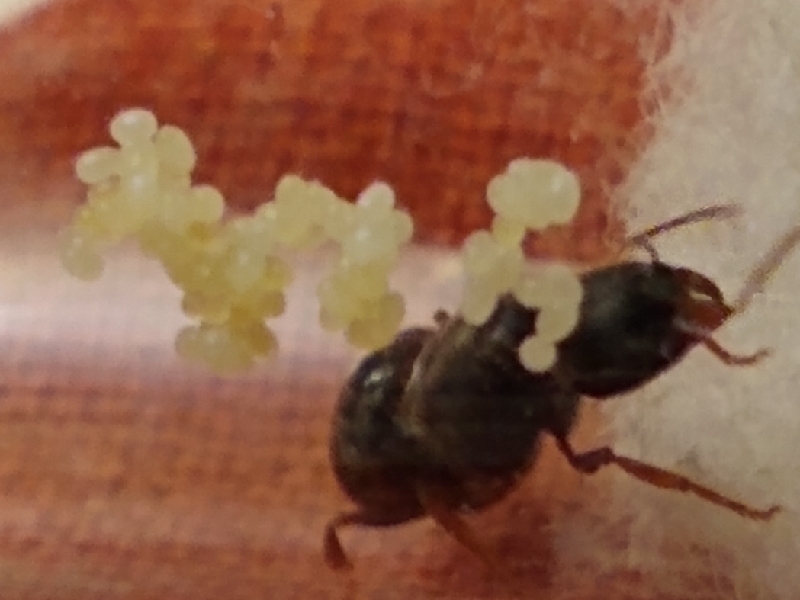- Formiculture.com
- Forums
- Gallery
- Members
- Member Map
- Chat

Polyacanthus' Ant Journal
Started By
Polyacanthus
, May 12 2019 9:50 AM
tapinoma sessile formica pallidefulva camponotus pennsylvanicus prenolepis imparis camponotus nearcticus lasius aphidicola crematogaster formica subsericea temnothorax tetramorium immigrans
96 replies to this topic
#21
 Offline
-
Posted June 12 2019 - 5:51 AM
Offline
-
Posted June 12 2019 - 5:51 AM
Yeah, I like seeing other interesting finds of queens, especially when you are not looking for them!
Hi there! I went on a 6 month or so hiatus, in part due, and in part cause of the death of my colonies.
However, I went back to the Sierras, and restarted my collection, which is now as follows:
Aphaenogaster uinta, Camponotus vicinus, Camponotus modoc, Formica cf. aserva, Formica cf. micropthalma, Formica cf. manni, Formica subpolita, Formica cf. subaenescens, Lasius americanus, Manica invidia, Pogonomyrmex salinus, Pogonomyrmex sp. 1, Solenopsis validiuscula, & Solenopsis sp. 3 (new Sierra variant).
#22
 Offline
-
Posted June 12 2019 - 2:44 PM
Offline
-
Posted June 12 2019 - 2:44 PM
My free range colony of Tapinoma were feeding on a mouse I caught in a trap with Nutella. Rather revolting.
"The ants are a people not strong, yet they prepare their meat in the summer." Prov. 30:25
Keep ordinary ants in extraordinary ways.
Keep ordinary ants in extraordinary ways.
#23
 Offline
-
Posted June 12 2019 - 6:40 PM
Offline
-
Posted June 12 2019 - 6:40 PM
Yeah, Nutella is gross 
- Canadian anter, TennesseeAnts and ANTdrew like this
#24
 Offline
-
Posted June 13 2019 - 3:59 PM
Offline
-
Posted June 13 2019 - 3:59 PM
#25
 Offline
-
Posted July 5 2019 - 7:06 PM
Offline
-
Posted July 5 2019 - 7:06 PM
The Tapinoma are still producing tons of brood. I don't see any alates anymore.
Formica are doing okay, have a few new workers that are a little smaller so I'll have to try to get them to eat better. But they're still producing brood.
C. pennsylvanicus. queen seems to be doing great. Took her out for a pic. Plenty of larvae and one pupa.

Formica are doing okay, have a few new workers that are a little smaller so I'll have to try to get them to eat better. But they're still producing brood.
C. pennsylvanicus. queen seems to be doing great. Took her out for a pic. Plenty of larvae and one pupa.

- ANTdrew likes this
#26
 Offline
-
Posted July 27 2019 - 6:24 PM
Offline
-
Posted July 27 2019 - 6:24 PM
#27
 Offline
-
Posted July 27 2019 - 8:43 PM
Offline
-
Posted July 27 2019 - 8:43 PM
that was really quick!
#28
 Offline
-
Posted July 28 2019 - 2:57 AM
Offline
-
Posted July 28 2019 - 2:57 AM
Excellent!
"The ants are a people not strong, yet they prepare their meat in the summer." Prov. 30:25
Keep ordinary ants in extraordinary ways.
Keep ordinary ants in extraordinary ways.
#29
 Offline
-
Posted July 28 2019 - 8:40 AM
Offline
-
Posted July 28 2019 - 8:40 AM
Very cool!
Billy
Currently keeping:
Camponotus chromaiodes
Camponotus castaneus
Formica subsericea
#30
 Offline
-
Posted June 29 2020 - 8:26 PM
Offline
-
Posted June 29 2020 - 8:26 PM
Well I had some setbacks last year.
When I returned from vacation, the T. sessile habitat was bone dry and everything inside deceased
The C. pennsylvanicus queen was up to about 15 workers when the colony suddenly all died. I believe I accidentally gave them water with a pipette I used previously for aquarium dechlorinator. The ant watering pipette is clearly labeled now!
The Formica cf. pallidefulva were living in plastic tubs all summer and producing small workers. After a bit too long without checking on them I noticed there was no more brood and no queen to be found. In the fall I was able to coax them into a tube setup by letting their tubs dry out. I sealed up the tube and put them in the cool basement for the winter months. I brought them upstairs this spring and connected them to the outworld I had originally made for the T. sessile and they are still living out their lives with no queen.
When I returned from vacation, the T. sessile habitat was bone dry and everything inside deceased
The C. pennsylvanicus queen was up to about 15 workers when the colony suddenly all died. I believe I accidentally gave them water with a pipette I used previously for aquarium dechlorinator. The ant watering pipette is clearly labeled now!
The Formica cf. pallidefulva were living in plastic tubs all summer and producing small workers. After a bit too long without checking on them I noticed there was no more brood and no queen to be found. In the fall I was able to coax them into a tube setup by letting their tubs dry out. I sealed up the tube and put them in the cool basement for the winter months. I brought them upstairs this spring and connected them to the outworld I had originally made for the T. sessile and they are still living out their lives with no queen.
Edited by Polyacanthus, June 29 2020 - 8:27 PM.
#31
 Offline
-
Posted June 30 2020 - 3:30 AM
Offline
-
Posted June 30 2020 - 3:30 AM
Ant colonies require lots of vigilance to thrive. Not too late to find new queens and start over, though.
- Antkid12 likes this
"The ants are a people not strong, yet they prepare their meat in the summer." Prov. 30:25
Keep ordinary ants in extraordinary ways.
Keep ordinary ants in extraordinary ways.
#32
 Offline
-
Posted July 2 2020 - 2:59 AM
Offline
-
Posted July 2 2020 - 2:59 AM
Indeed! Just wanted to finish logging where I left off before new updates 😁
The Formica outworld is sitting on a heating pad that turns on and off with the aquarium light timer, so just on during the day. It gets up to about 90F by afternoon. They seem to enjoy it, always a few running around in there. Recently I set up a fresh new tube in case they wanted to move but of course they're sticking with the gross one.
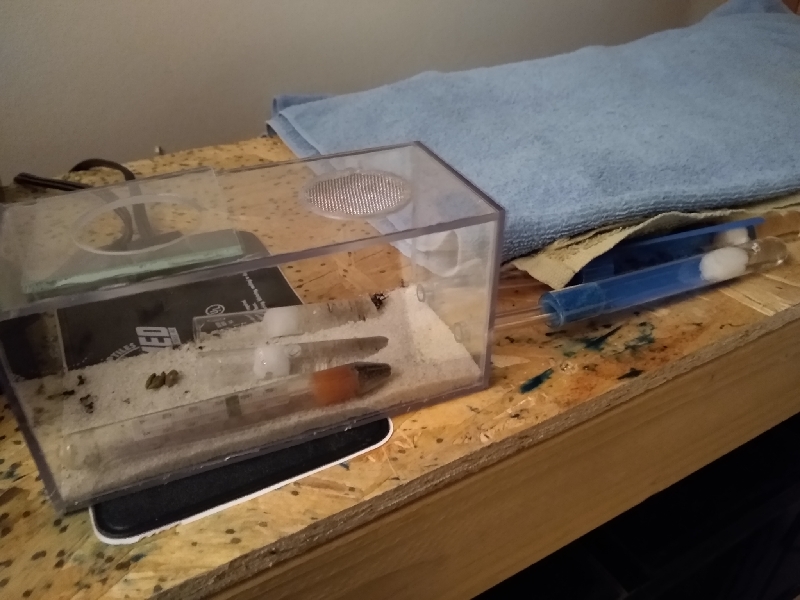
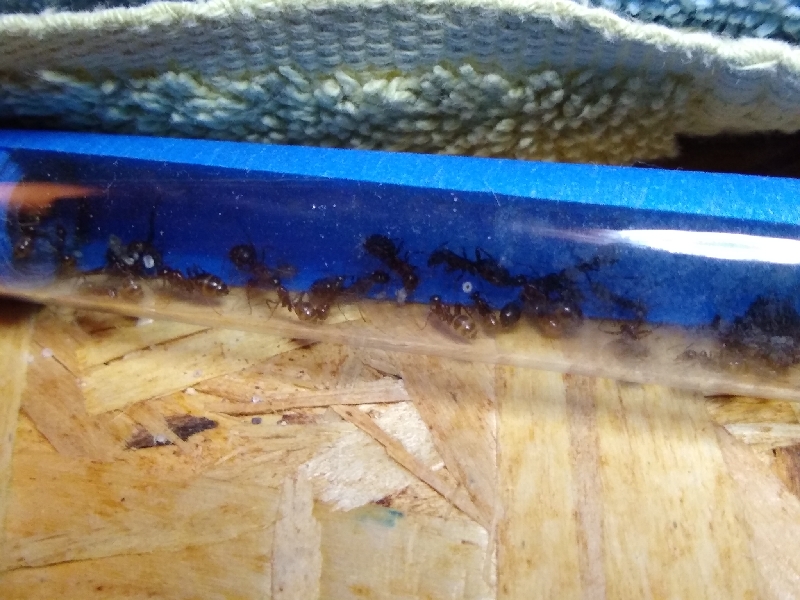
The Formica outworld is sitting on a heating pad that turns on and off with the aquarium light timer, so just on during the day. It gets up to about 90F by afternoon. They seem to enjoy it, always a few running around in there. Recently I set up a fresh new tube in case they wanted to move but of course they're sticking with the gross one.


- CatsnAnts likes this
#33
 Offline
-
Posted July 2 2020 - 4:20 AM
Offline
-
Posted July 2 2020 - 4:20 AM
Nice!
Ants I have: Tapinoma sessile(2 queen colony). RED MORPH Camponotus neacticus(now has pupae!), Tetramorium immigrans (x3), Aphaenogaster sp, Temnothorax sp, Brachymyrmex sp. possibly infertile ![]() , Ponera pennsylvanica, and Pheidole morrisi!
, Ponera pennsylvanica, and Pheidole morrisi! ![]()
Other insects: Polistes sp. Queen
Ants I need: Pheidole sp., Trachymyrmex sp., Crematogaster cerasi , Dorymyrmex sp. Most wanted: Pheidole morrisii
#34
 Offline
-
Posted July 2 2020 - 7:46 PM
Offline
-
Posted July 2 2020 - 7:46 PM
So this year I was prepared to catch queens. I heard Camponotus pennsylvanicus were seen flying the evening of the 24th here in MI so the next day after work I started looking around the house. I didn't see anything so was just observing the ants on the driveway and I see what looks like a queen running along a seam in the concrete. I had a container in hand so I collected it. Sure enough looks like a Formica pallidefulva queen!
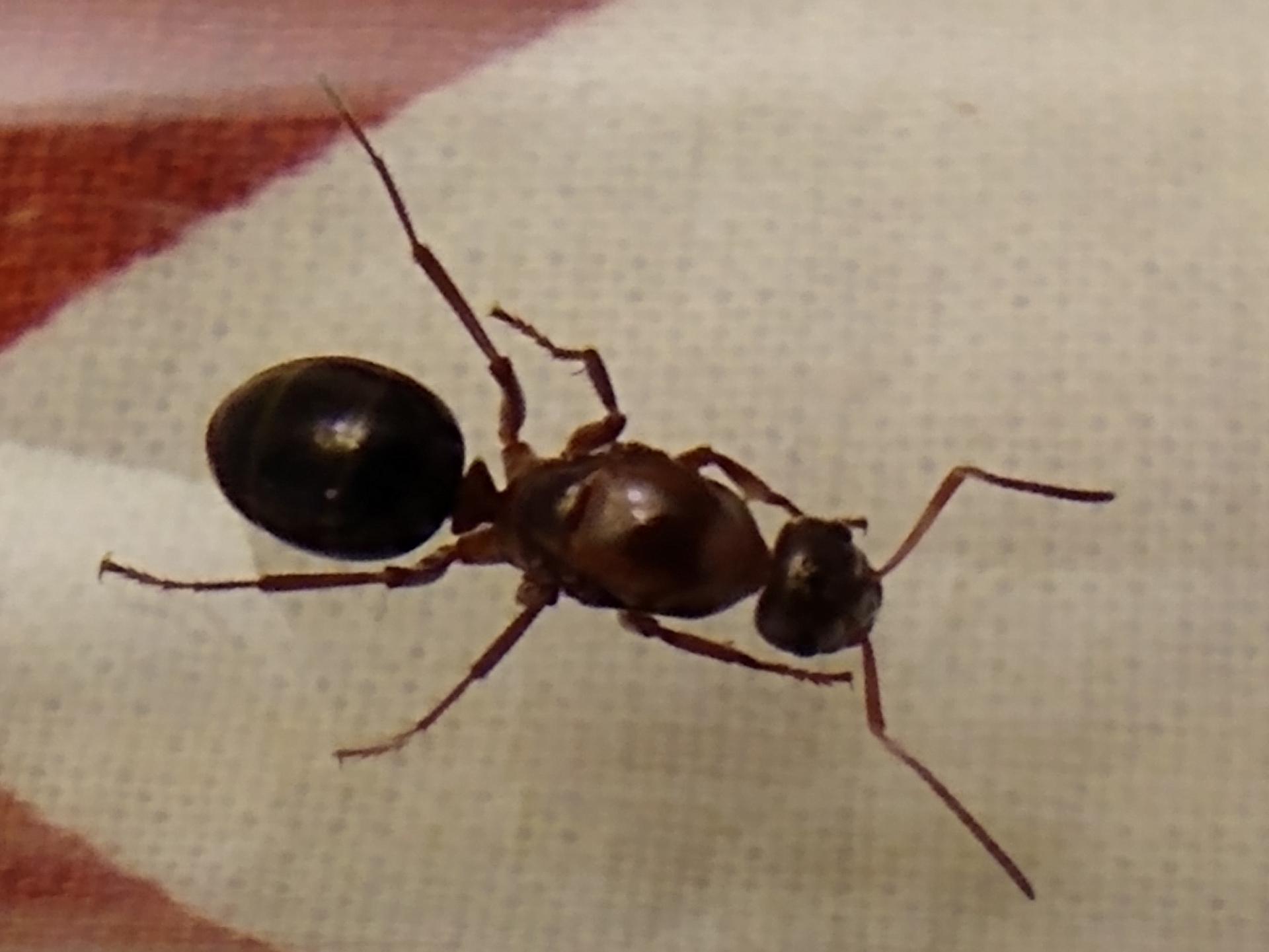
Seemed really early for Formica to be out like that but I'm glad I happened to be out looking!
I captured her in a plastic portion container and she was laying eggs before I even got her into a proper test tube that evening! Here she is a week later with a pile of eggs.
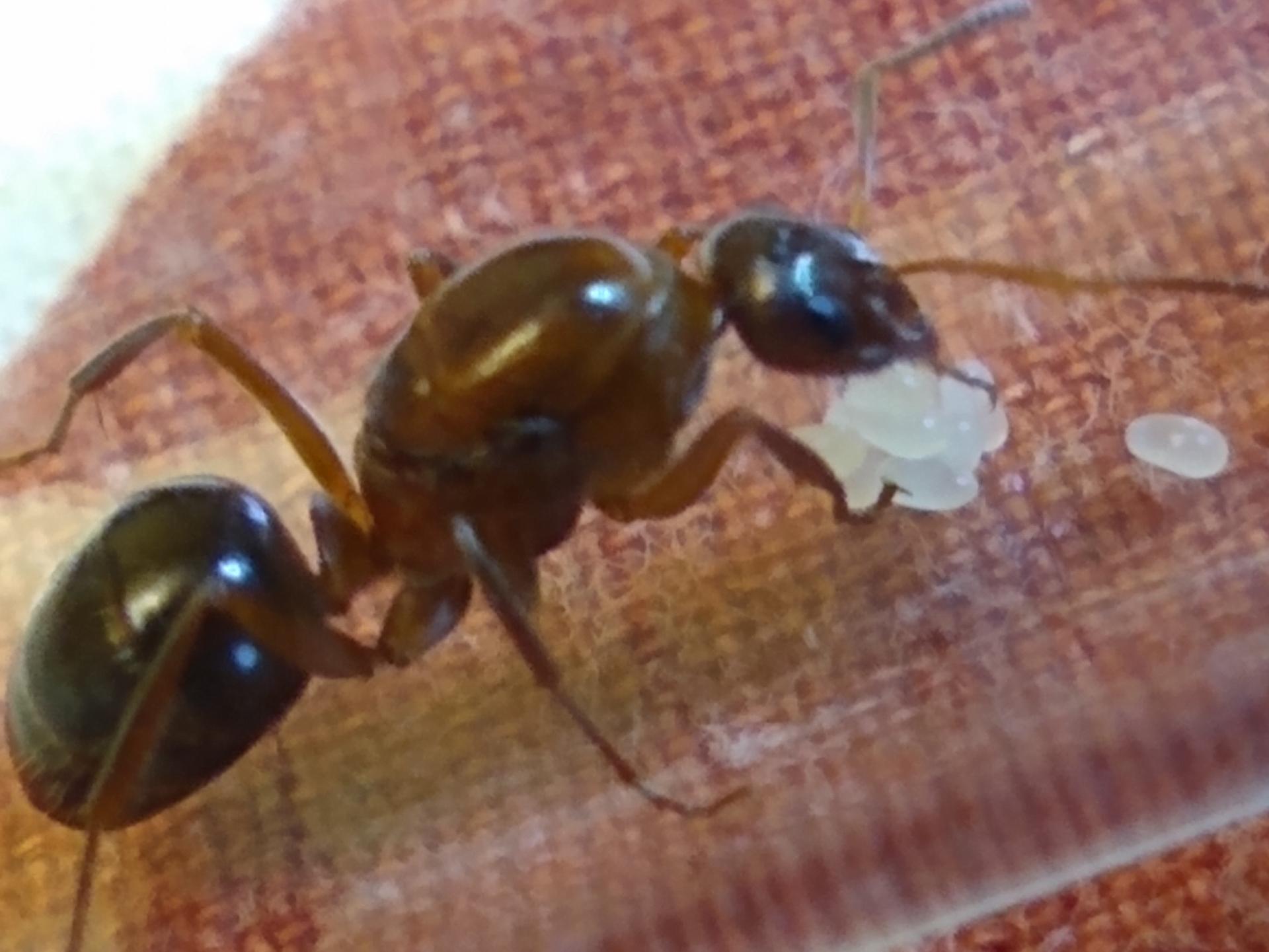

Seemed really early for Formica to be out like that but I'm glad I happened to be out looking!
I captured her in a plastic portion container and she was laying eggs before I even got her into a proper test tube that evening! Here she is a week later with a pile of eggs.

- ANTdrew likes this
#35
 Offline
-
Posted July 3 2020 - 3:53 PM
Offline
-
Posted July 3 2020 - 3:53 PM
For future reference here are the data:
Collected May 25
First egg May 25
First larva June 4
First pupa June 18
First nanitic June 29
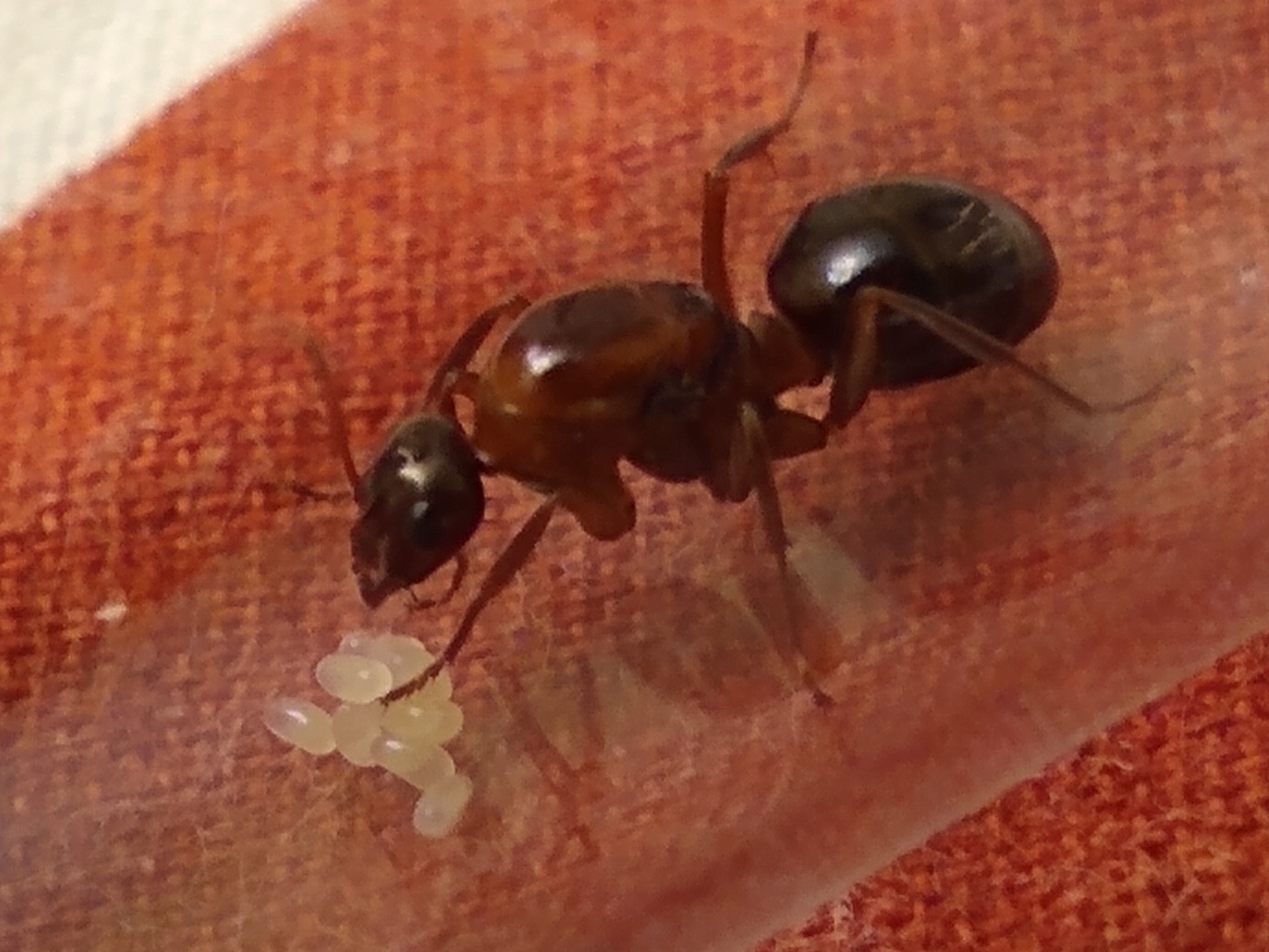
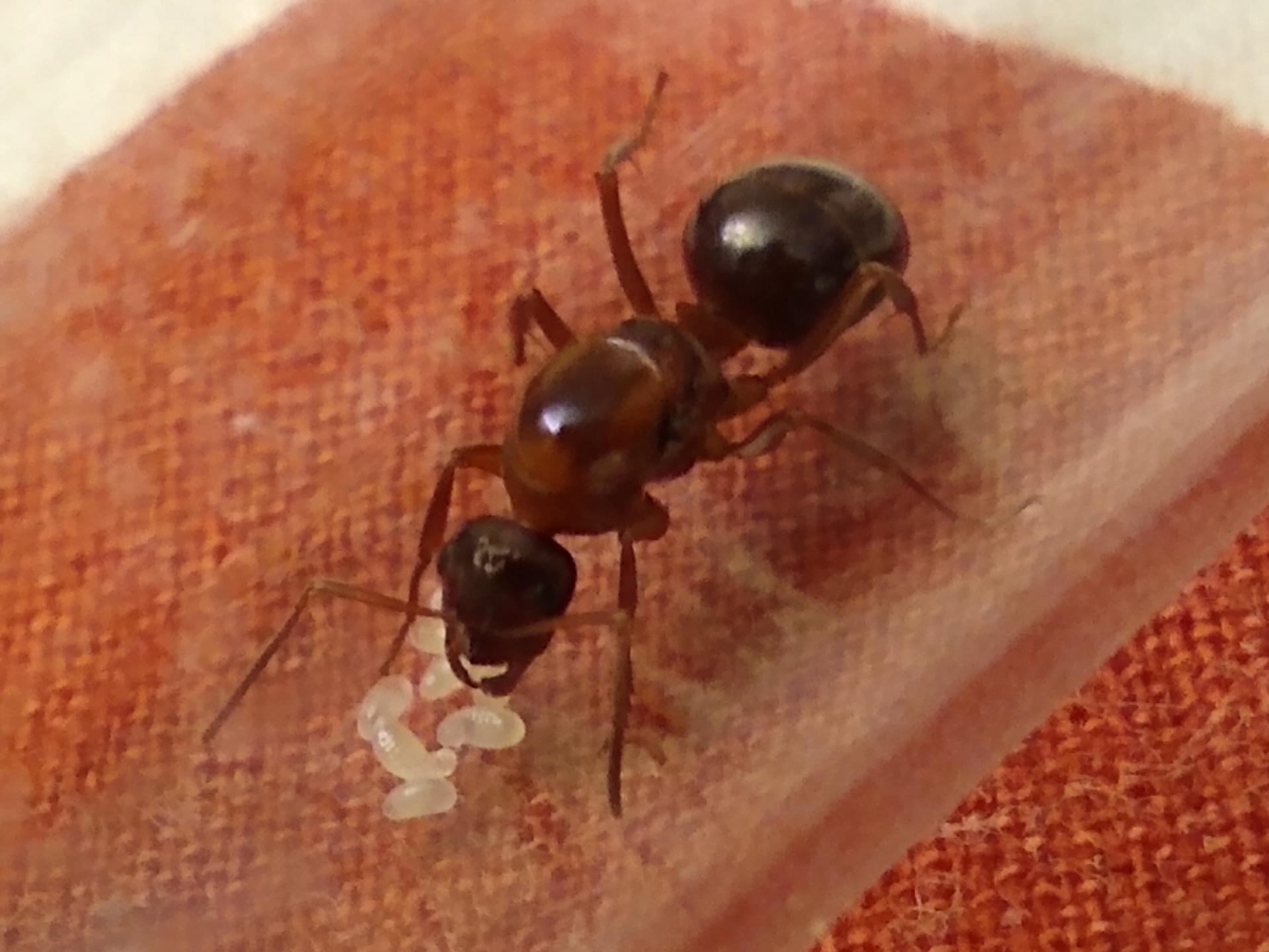
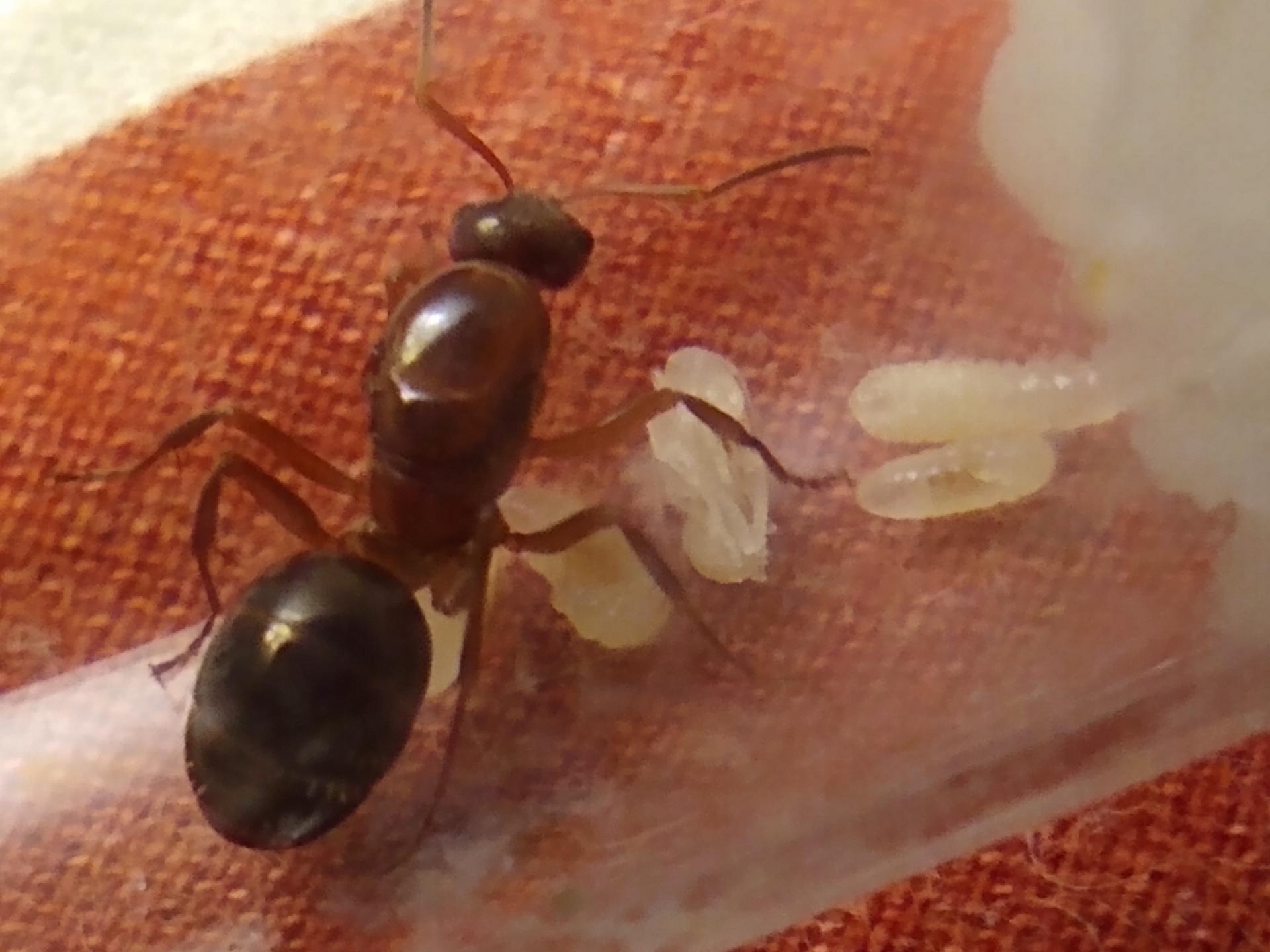
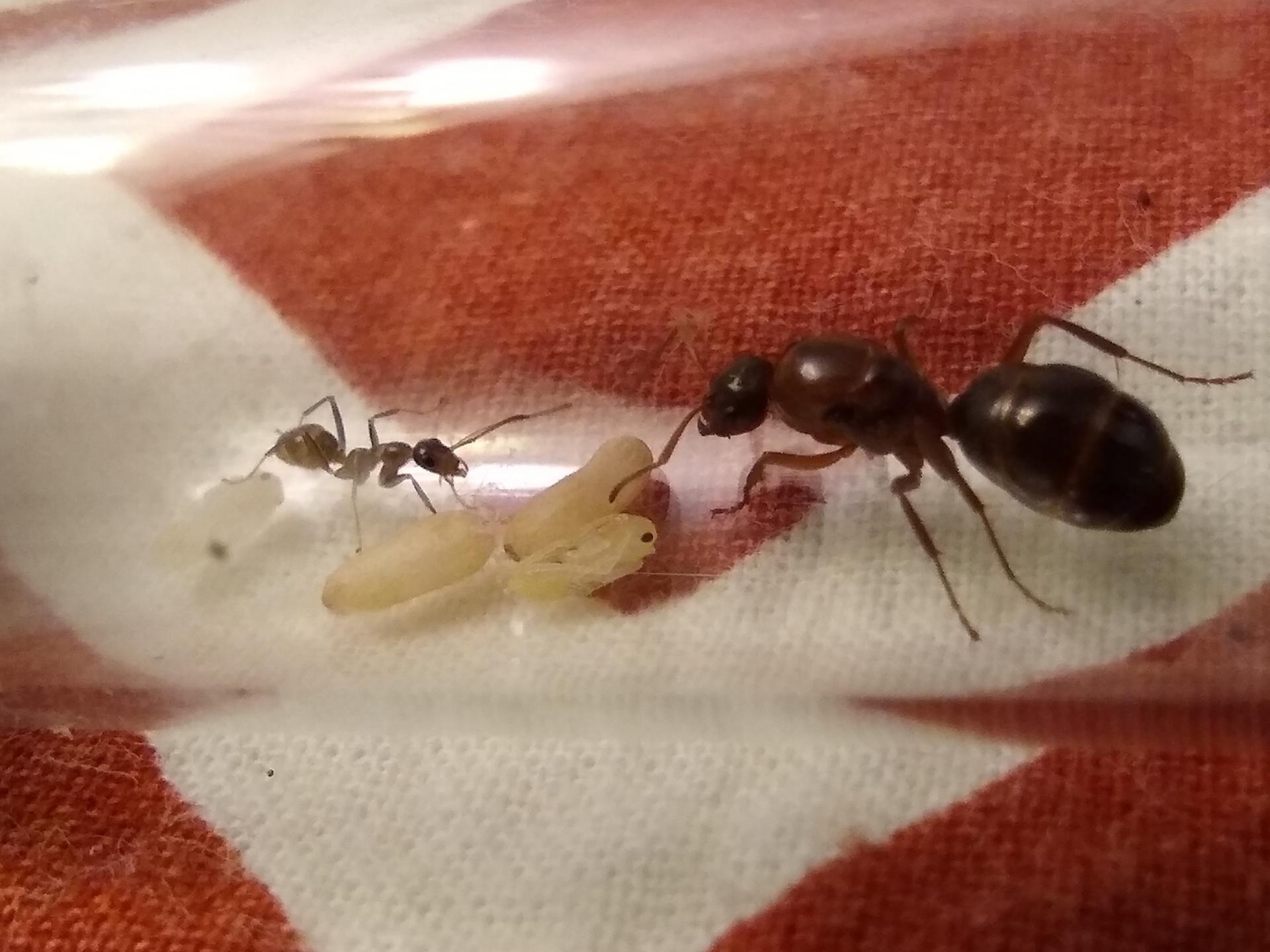
She was up to about 10 eggs at one point, 6 made it to larva, and 5 made it to pupa. 2/5 of the pupae formed cocoons. She has her second nanitic now, and one new egg.
Collected May 25
First egg May 25
First larva June 4
First pupa June 18
First nanitic June 29




She was up to about 10 eggs at one point, 6 made it to larva, and 5 made it to pupa. 2/5 of the pupae formed cocoons. She has her second nanitic now, and one new egg.
- ANTdrew and Zzz like this
#36
 Offline
-
Posted July 5 2020 - 8:05 PM
Offline
-
Posted July 5 2020 - 8:05 PM
I was prepared for Camponotus season this year. Last year I think I was late to the party and ended up with the stragglers- I had 3 pennsylvanicus, two died, one survived only until fall. This year I caught 12 pennsylvanicus and was given one nearcticus found in a pool. Sadly the nearcticus and a couple penns passed, now I have 9 pennsylvanicus queens healthy and producing lots of brood.
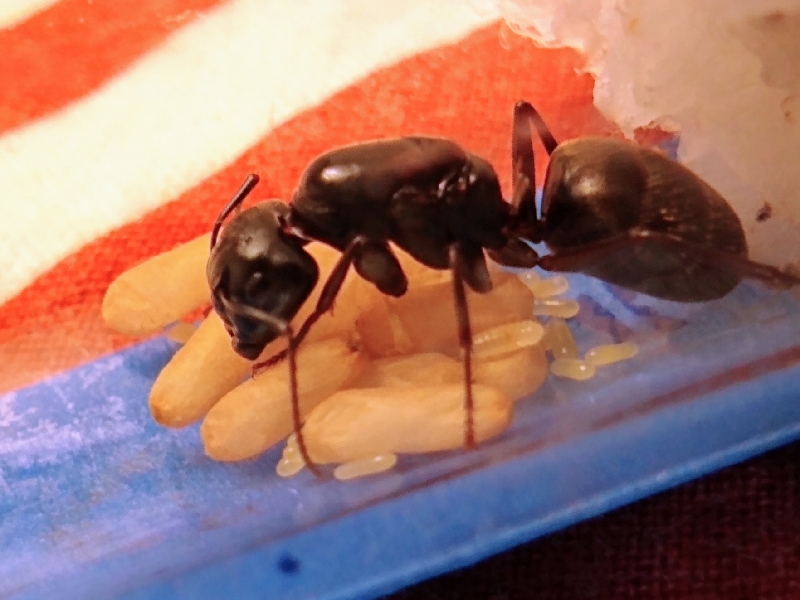
Recently the Tetramorium immigrans were out so I grabbed some queens from the driveway, I have 7, all laying eggs.
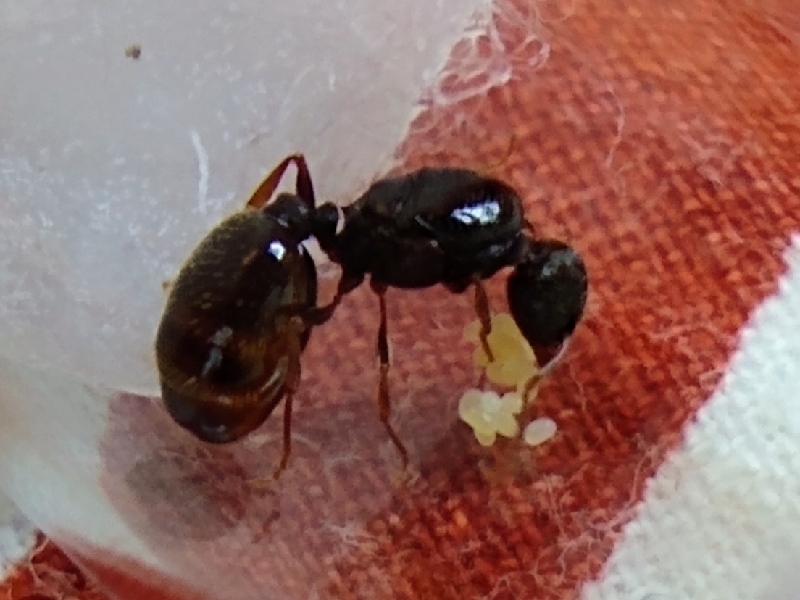
Here is my setup right now. I have all the test tubes between two folded blankets on a shelf.
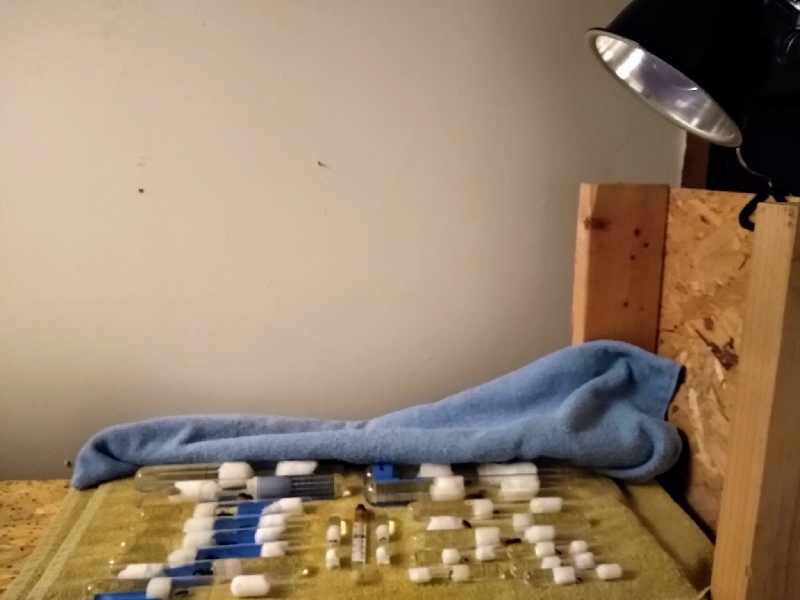
We keep the house around 75F, I wanted to warm them a bit so I picked up a reptile heat lamp. It turns on during the day and warms the top blanket a bit, a thermometer inside with the tubes shows about 86F so that probably helps.

Recently the Tetramorium immigrans were out so I grabbed some queens from the driveway, I have 7, all laying eggs.

Here is my setup right now. I have all the test tubes between two folded blankets on a shelf.

We keep the house around 75F, I wanted to warm them a bit so I picked up a reptile heat lamp. It turns on during the day and warms the top blanket a bit, a thermometer inside with the tubes shows about 86F so that probably helps.
- CatsnAnts and ANTdrew like this
#37
 Offline
-
Posted July 6 2020 - 8:08 PM
Offline
-
Posted July 6 2020 - 8:08 PM
After her first nanitic eclosed I gave the Formica queen a drop of sugar water which she quickly slurped up, then ran over to the nanitic to feed her.
A few days later with a second nanitic present I gave them a little flake of boiled egg white, here the one on the right is working on it.
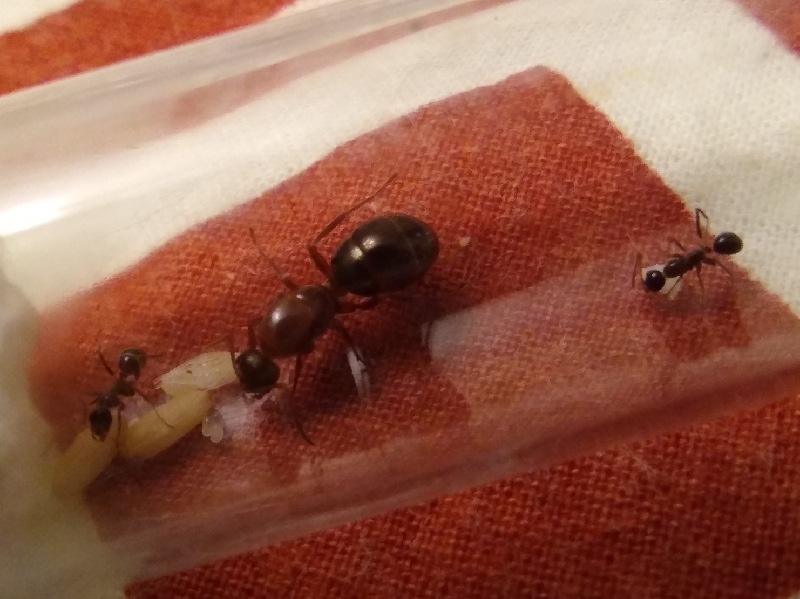
A few days later with a second nanitic present I gave them a little flake of boiled egg white, here the one on the right is working on it.

- CatsnAnts likes this
#38
 Offline
-
Posted July 7 2020 - 7:34 PM
Offline
-
Posted July 7 2020 - 7:34 PM
#39
 Offline
-
Posted July 8 2020 - 2:25 AM
Offline
-
Posted July 8 2020 - 2:25 AM
Yeah, they don’t screw around!
"The ants are a people not strong, yet they prepare their meat in the summer." Prov. 30:25
Keep ordinary ants in extraordinary ways.
Keep ordinary ants in extraordinary ways.
#40
 Offline
-
Posted July 8 2020 - 7:09 AM
Offline
-
Posted July 8 2020 - 7:09 AM
Keep in mind that most of these eggs are trophic, and will be eaten by the queen and/or larvae. The amount of nanitics is comparable to most other species.
"God made..... all the creatures that move along the ground according to their kinds (including ants). And God saw that it was good. Genesis 1:25 NIV version
Keeping:
Tetramorium immigrans Camponotus vicinus, modoc, novaeboracensis, herculeanus
Formica pallidefulva, argentea Solenopsis molesta
Formica cf. aserva Lasius brevicornis, neoniger
Also tagged with one or more of these keywords: tapinoma sessile, formica pallidefulva, camponotus pennsylvanicus, prenolepis imparis, camponotus nearcticus, lasius aphidicola, crematogaster, formica subsericea, temnothorax, tetramorium immigrans
1 user(s) are reading this topic
0 members, 1 guests, 0 anonymous users







